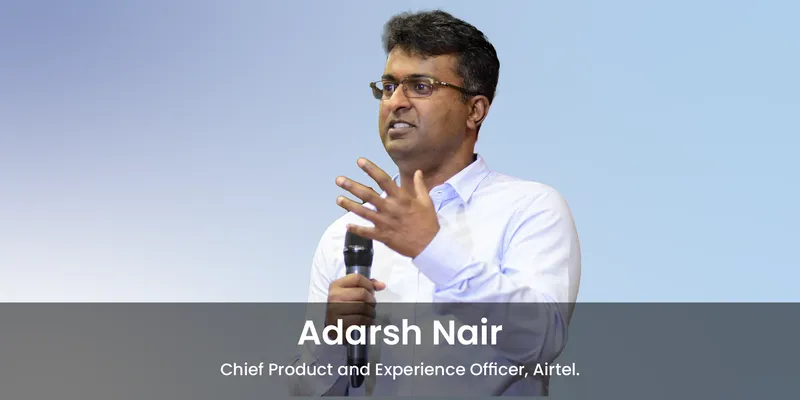How Airtel wants to usher broadcast owners to OTT
The telco has released a suite for the media and entertainment industry to capitalise on the OTT boom.
"All the insights of what people are consuming today sit with three OTT companies in India," says Adarsh Nair, Chief Product and Experience Officer of Bharti Airtel, referring to Disney+ Hotstar, Amazon Prime Video, and Netflix. "Broadcast companies need a a neutral player who is not making content."
On Tuesday, Bharti Airtel launched its platform-as-a-service (PaaS) for content-creators and owners to build and execute their own OTT (over-the-top) apps. The cloud-based platform is called 'Airtel IQ Video'.
"We want to be a singular distribution and tech partner to content creators," Nair told EnterpriseStory. "There is a huge need for such a technology to help regional content companies rise."

The digital and OTT market in India is estimated to generate revenue of Rs 33,800 crore in fiscal year (FY) 2022, according to consulting firm KPMG. That's 33 percent more than the FY 2021 base of Rs 21,800 crore, when it grew 17 percent over the previous year.
Between advertising on OTT platforms and subscription revenue, Airtel pegs the opportunity to be at $1.5 billion (Rs 112.6 crore), and slated to touch $12.5 billion (Rs 938.6 crore) by 2030.
It wants to usher in a large base of broadcast TV channels that own content in analog-recordings, and provide them with the wherewithal to transcode that content, create an OTT app, and provide the subscriber management and analytics tools to grow their digital revenue.
The content owners of the television era face three typical challenges in scaling their business. One, high operational complexity. "Any time an enterprise wants to have a video-streaming business, they have to work with four or five service-providers," Nair says. These can range from services like storage on the cloud, to playback video, and video transcoding.
Two, cost of building and maintaining a technology team. And three, there is little money left for the media enterprise to allocate toward distribution and promotion.
With Airtel's subscription platform, Nair says the content-owners can build their digital strategy for mobile, TV and web.
It has created the video PaaS based on its experience of building the Airtel Xstream app, which has 40 million monthly active users. "Our cost of building Airtel IQ Video is amortised because we have been running the Xstream video business," Nair says.
Airtel Xstream has its genesis in the company's Digital TV services division. In September 2019, Xstream began as a connected box. The 'Airtel Xstream Bundle' gives access to Linear Pay TV and OTT streaming apps, such as Disney+ Hotstar, Amazon Prime Video, and ZEE5.
"All the core technologies had to be built in the past four years to support that business anyway," Nair says. "We are taking that stack, and making it available to broadcasters."
The Digital TV services, which clocks roughly Rs 750 crore every quarter, also gives Airtel the relationships with broadcast and content owners. "Major broadcasters already work with us — their feeds are coming through our DTH (direct to home) technology today," Nair says. "As we work with them from live-streaming to DTH, we are asking them if they want an assist on the OTT side?"
These are its enterprise customers in the media and entertainment industry, giving it a start of 50 companies in the IQ Video pipeline. Airtel has already taken Raj TV, a broadcasting network in south India, to OTT, helping it convert 30,000 hours of video from betamax tapes to digital files.
The Airtel IQ Video team comprises 50 people, mostly developers, data scientists, analytics and product managers.
Until now, Airtel IQ's revenues have come from 120 enterprises that plug and play the telco's voice and SMS applications via APIs. With the video PaaS, Airtel IQ will use the media and entertainment sector as a starting point, and then expand in education, foodtech, and financial services.
“If any company wants to have a video solution inside their app, they can leverage our video platform," Nair says. The use-cases include universities that want to provide video tutorials, and foodtech platforms that want to connect customers with restaurants.






